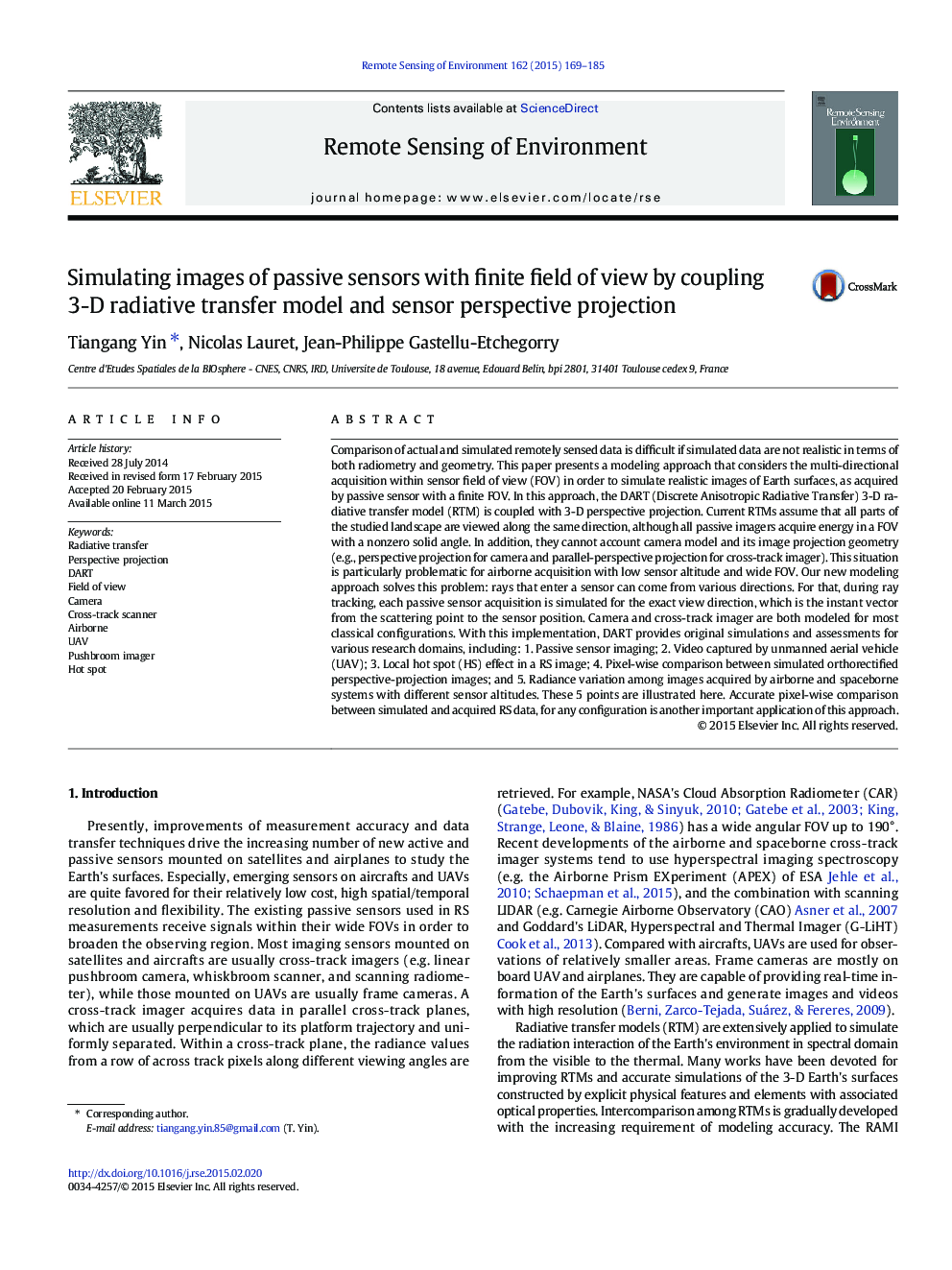| Article ID | Journal | Published Year | Pages | File Type |
|---|---|---|---|---|
| 4458848 | Remote Sensing of Environment | 2015 | 17 Pages |
•A new method is presented to simulate sensor images with finite field of view.•The method combines 3-D radiative transfer model with perspective projection.•The method is adapted for both camera and cross-track imager configurations.•Assessments are presented, including video camera, local hot spot effect.•Potential for pixel-wise comparison with actual airborne/spaceborne images
Comparison of actual and simulated remotely sensed data is difficult if simulated data are not realistic in terms of both radiometry and geometry. This paper presents a modeling approach that considers the multi-directional acquisition within sensor field of view (FOV) in order to simulate realistic images of Earth surfaces, as acquired by passive sensor with a finite FOV. In this approach, the DART (Discrete Anisotropic Radiative Transfer) 3-D radiative transfer model (RTM) is coupled with 3-D perspective projection. Current RTMs assume that all parts of the studied landscape are viewed along the same direction, although all passive imagers acquire energy in a FOV with a nonzero solid angle. In addition, they cannot account camera model and its image projection geometry (e.g., perspective projection for camera and parallel-perspective projection for cross-track imager). This situation is particularly problematic for airborne acquisition with low sensor altitude and wide FOV. Our new modeling approach solves this problem: rays that enter a sensor can come from various directions. For that, during ray tracking, each passive sensor acquisition is simulated for the exact view direction, which is the instant vector from the scattering point to the sensor position. Camera and cross-track imager are both modeled for most classical configurations. With this implementation, DART provides original simulations and assessments for various research domains, including: 1. Passive sensor imaging; 2. Video captured by unmanned aerial vehicle (UAV); 3. Local hot spot (HS) effect in a RS image; 4. Pixel-wise comparison between simulated orthorectified perspective-projection images; and 5. Radiance variation among images acquired by airborne and spaceborne systems with different sensor altitudes. These 5 points are illustrated here. Accurate pixel-wise comparison between simulated and acquired RS data, for any configuration is another important application of this approach.
